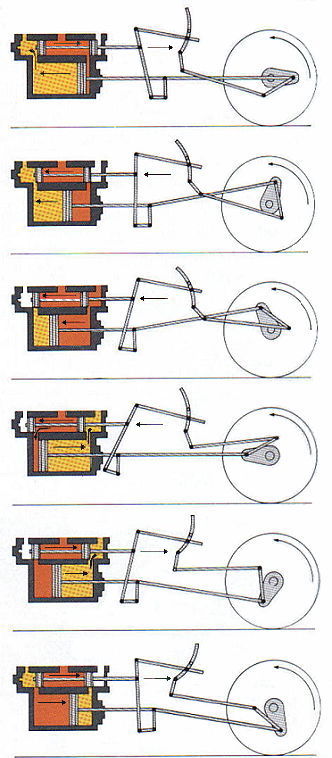The function of the locomotive valve gear is to regulate the movement of the valves so that steam is admitted and exhausted from the cylinders in relation to the position of the pistons. It also allows the driver to alter the length of steam admission, known as cut-off, and to reverse the locomotive.
In the Walschaert valve gear, which was common among many railway companies except for the Great Western, fore-and-aft movement of the valve spindle is controlled by both the combination lever and the expansion link. These two sources of fore-and-aft motion are joined at the point where the combination lever and radius rod are pinned together.
The movement of the expansion link is obtained from an eccentric rod attached via the crank axle. Adjustment to the length of valve travel is made by raising or lowering the position of the radius rod within the expansion link. This is achieved by operation of the reversing rod from in the cab. The length of travel of the radius rod, and therefore of the valve spindle, depends on the rod's position within the expansion link. Maximum valve travel giving maximum steam admission is obtained when the radius rod is positioned furthest from the centre of the expansion link. Moving the radius rod from one half of the expansion link to the other, reverses the movement of the locomotive by admitting steam into what otherwise would have been the exhausting side of the piston's cycle. |
 |